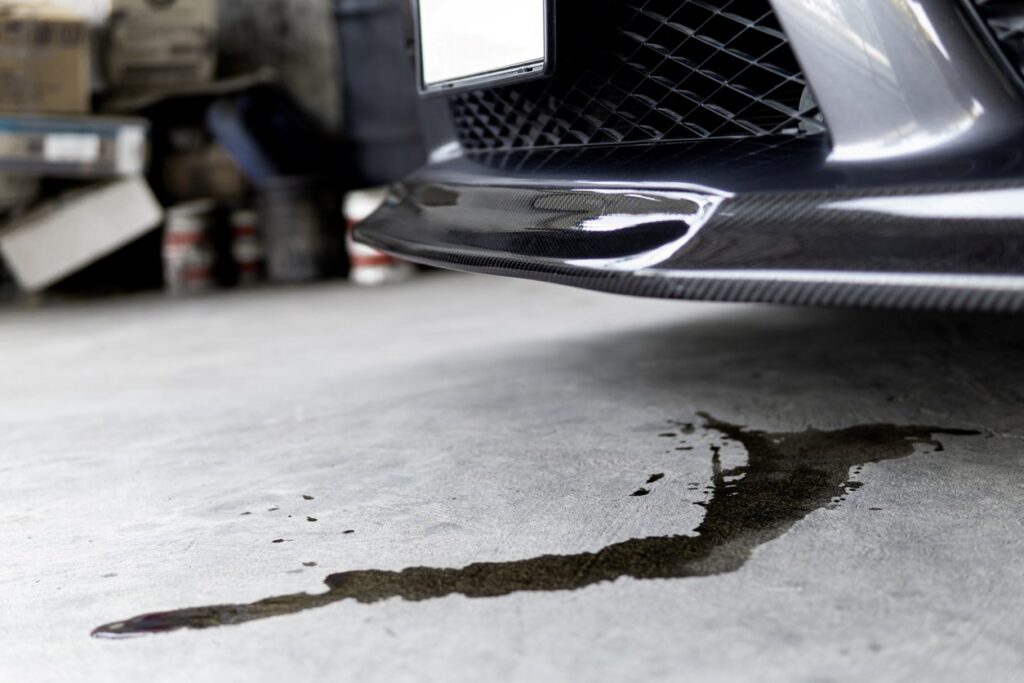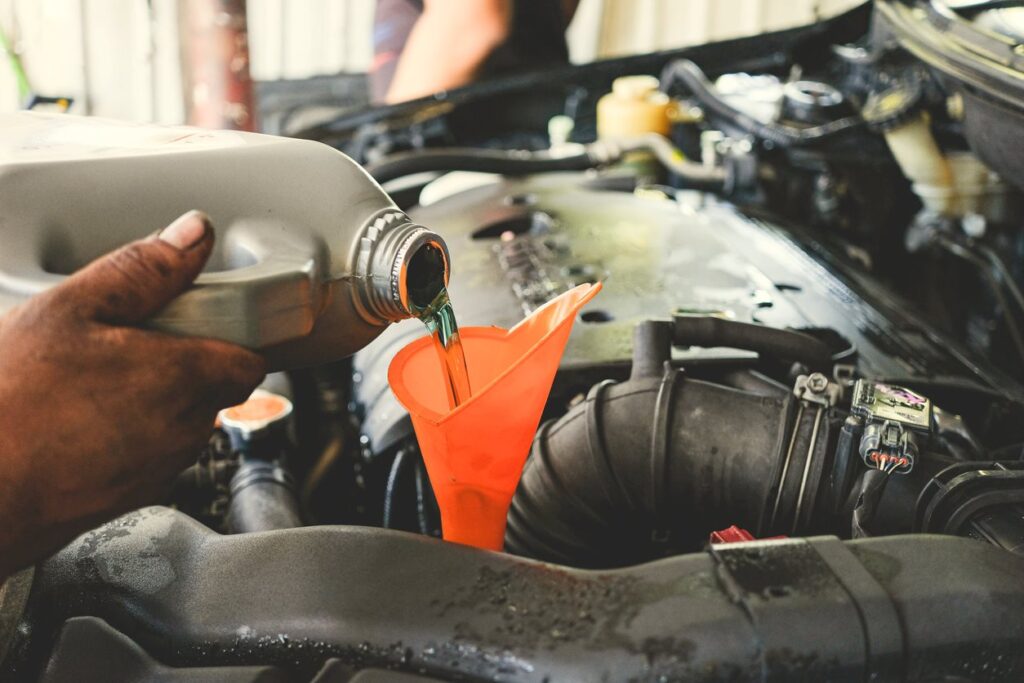The transmission is like a vehicle’s beating heart—sending channels of power to the wheels, keeping the car moving forward through a series of gears or ratio changes. If this essential component malfunctions or fails, driving your car can quickly become an uphill battle or, worse, come to a sudden and disappointing halt.
A transmission failure will make the vehicle essentially inoperable, as it cannot change gears or bring power to the wheels. Driving with a blown transmission is extraordinarily difficult, if not impossible.
Fortunately, the Kennedy Transmission is here with valuable information to help prolong your transmission’s life span. This information includes quick facts, the basics of a transmission fluid change, and how identifying specific transmission failure symptoms can help save money on costly repairs.
Transmission Quick Facts
How Often Are You Supposed To Change Transmission Fluid?
- Change manual transmission fluid every 30,000 to 60,000 miles
- Change automatic transmission fluid every 60,000 to 100,000 miles
How Long Does a Transmission Last?
- Life span without maintenance—100,000 miles or less
- Life span with proper maintenance—300,000 miles or more
What Color Is Transmission Fluid and What Does It Mean?
Transmission fluid is translucent but often dyed a bright red to differentiate from other car fluids. The color of the fluid can tell you a lot about the state of your transmission. Here’s what the different colors signify:
- Bright red. Fluid is new or like new and no immediate action is necessary.
- Dark red. The fluid is in good condition, as color darkening is natural when the fluid mixes with debris particles.
- Brown or muddy. The fluid is dirty, and oxidizing is beginning. Schedule a transmission fluid flush now or soon.
- Very dark brown or black. The fluid is severely contaminated or oxidized and is not receiving lubrication. An immediate transmission fluid flush is needed.
- Pink or foamy. The transmission fluid cooler is damaged or contaminated with coolant. Replace the cooler and flush the system as the coolant circling through the transmission can quickly damage it.
How To Check Transmission Fluid
Checking your vehicle’s transmission fluid is relatively simple yet incredibly important for maintaining its health. Refer to your vehicle’s owner’s manual to refresh your memory on what the transmission looks like under the hood and where the dipstick is, if necessary. Steps for checking the transmission fluid include:
- Warm up the engine by starting the car and letting it run for a few minutes.
- Find the transmission fluid dipstick under the hood—usually to the right of the oil dipstick.
- Remove the dipstick and check the fluid. If it looks dirty or smells burnt, it needs to be replaced.
- Use a rag to wipe off the dipstick and reinsert it.
- Pull the dipstick out again, comparing the oil level to the “full” and “low” marks on the dipstick. If it’s low, use a long funnel to add more fluid, making sure not to overfill.
How Much Is a Transmission, and What’s a Transmission Flush Cost?
A brand-new transmission is a hefty chunk of change, with manual transmissions generally being less expensive than automatic ones. A new transmission typically ranges from $1,500 to $3,500, and with labor costs, it can sometimes exceed $5,000. When budgeting for a new transmission and labor, it’s advisable to plan for expenses ranging from $2,900 to $7,100.
On the other hand, if you only require a transmission flush, this service is more affordable and involves less labor. The cost for a transmission flush varies by location and can range from $80 to $290. Contact your local Kennedy Transmission to find out more details on transmission costs.
What Transmission Do I Have?
There are a few simple and easy methods to find out the type of transmission in your car:
- Owner’s manual
- Driver’s side door placard
- Vehicle identification number (VIN)
- Oil pan
- Label on the transmission

Signs of a Failing Car Transmission
Unusual Noises
Unusual noises are only welcome on Halloween or in a haunted house, not when they’re coming from under the hood of your car. From bee-like swarming sounds of humming, buzzing, whining, or whirring to unsettling horror movie sound effects, including clunking, grinding, gurgling, and high-pitched metal-on-metal screeching, the noises can provide helpful insight into the condition of your transmission.
The strange sounds coming from your vehicle can indicate a range of issues, such as worn-out clutch plates, improperly adjusted transmission bands, faulty torque, low fluid levels, or damaged transmission components. Whenever you notice your car making unusual noises, schedule an appointment.
Fluid Leaks
Like any other complex machine with moving components, the transmission can experience wear and tear in its various parts. Seals, loose plugs, a faulty torque converter, and a damaged transmission pan can lead to transmission fluid leaks and subsequent problems. Common signs of a fluid leak include:
- Burning smell
- Low fluid levels after a recent top-off
- Abnormal vibrating and shuddering
- Shifting issues
- Dashboard warning light
- Overheating transmission
- Fluid on the ground under the car
- Gear slippage
- Unnatural sounds
Transmission fluid leaks may not appear significant initially, but they can be inconvenient and expensive. From the loss of accelerating power and trouble with staying in specific gears to the complete seizure of parts, fluid leaks can quickly escalate into a dangerous problem. In rare cases, if the leaked fluid comes in contact with hot engine components or ignition sources, it can cause a fire.
Gear Slippage
Gear slipping happens when the transmission momentarily loses grip between gears, leading to a sudden decrease in engine power and vehicle speed. There are several potential reasons for gear slippage, such as dirty, burnt, or low transmission fluid, problems with the clutch, worn gears, damaged bands, or a faulty solenoid that controls the flow of the transmission fluid.
Neglecting to address gear slippage can result in costly consequences beyond erratic shifting and over-revving. It also can lead to transmission failure, increased repair costs, significant roadway safety hazards, and even a shorter vehicle life span.

Common Transmission-Related Warning Lights and What They Mean
Several warning lights are related to the transmission, each indicating a different issue. Some of the common ones to look out for are the:
- Transmission temperature light. This is possibly from overheating, a fluid leak, or electronic control system malfunctions.
- Red transmission light. A severe problem has been detected—stop safely and seek a professional transmission mechanic.
- Orange transmission light. This is a serious problem—prompt investigation from a transmission shop is necessary.
- Gear-shaped transmission light with an exclamation point. This signals numerous potential issues—low fluid, faulty sensors, or problems with the wiring or clutch.
Ignoring these warning lights can result in a catastrophe, leading to total transmission failure or even shortening the life of your vehicle. These factors can escalate rapidly, underscoring the vital need to quickly address warning lights on your dashboard.
Reliable Transmission Repair and Fluid Replacement From Kennedy Transmission
Has it been so long since your last transmission fluid flush that you don’t even remember going? Have you never replaced the fluid? A failing transmission can snowball quickly into a dangerous and expensive problem. If you notice gear slippage, fluid leakage, warning lights turn on, or hear unusual noises, it’s time to head to your trusted automotive service provider.
When you find yourself wondering how to replace transmission fluid for your car, get that thing off the road and visit the experts at Kennedy Transmission! Find the closest Kennedy Transmission auto repair location today, or explore our vast range of automotive services for more maintenance options. You’re also welcome to visit our automotive blog for additional helpful tips and practical advice.

